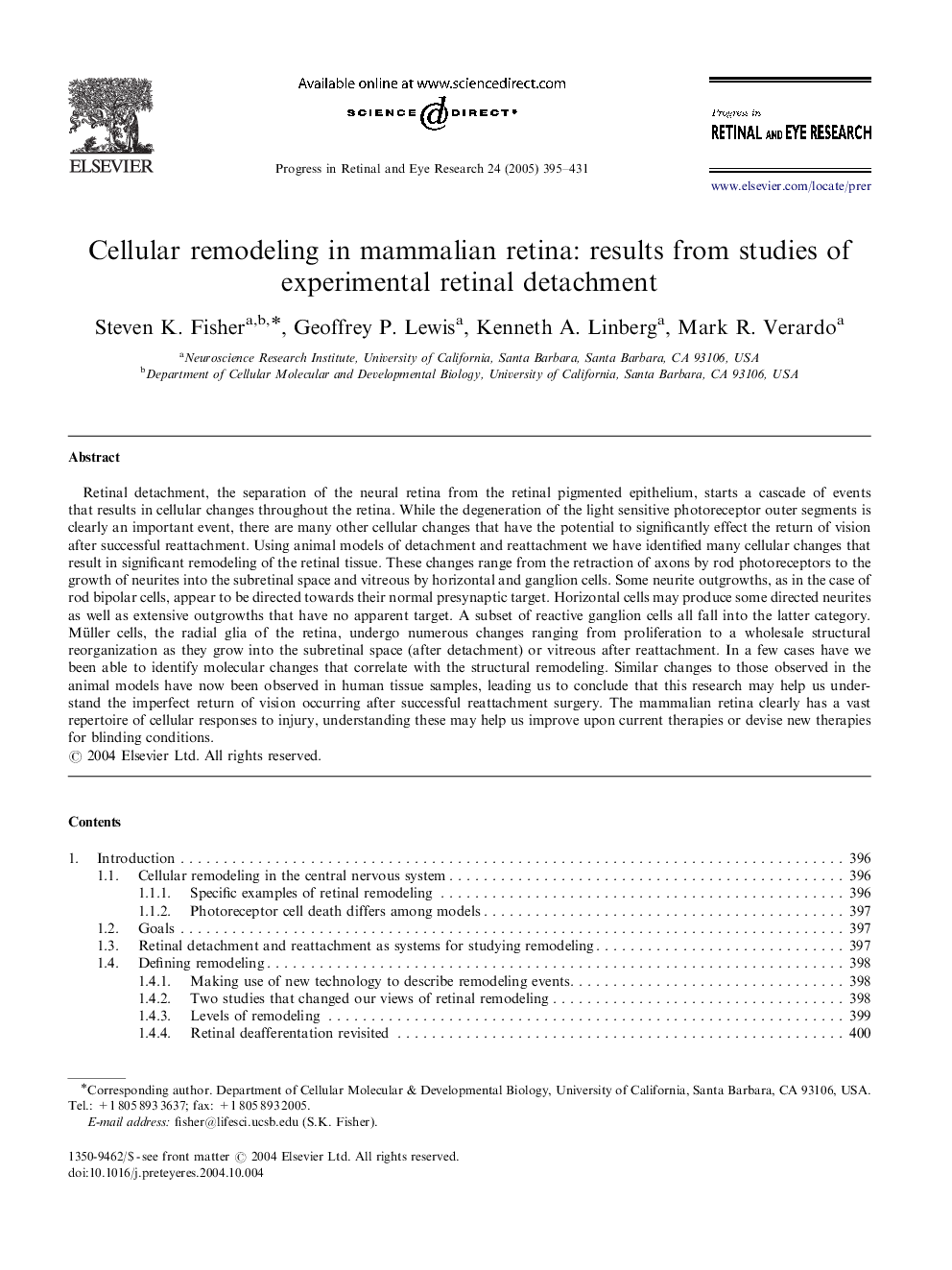| Article ID | Journal | Published Year | Pages | File Type |
|---|---|---|---|---|
| 9348349 | Progress in Retinal and Eye Research | 2005 | 37 Pages |
Abstract
Retinal detachment, the separation of the neural retina from the retinal pigmented epithelium, starts a cascade of events that results in cellular changes throughout the retina. While the degeneration of the light sensitive photoreceptor outer segments is clearly an important event, there are many other cellular changes that have the potential to significantly effect the return of vision after successful reattachment. Using animal models of detachment and reattachment we have identified many cellular changes that result in significant remodeling of the retinal tissue. These changes range from the retraction of axons by rod photoreceptors to the growth of neurites into the subretinal space and vitreous by horizontal and ganglion cells. Some neurite outgrowths, as in the case of rod bipolar cells, appear to be directed towards their normal presynaptic target. Horizontal cells may produce some directed neurites as well as extensive outgrowths that have no apparent target. A subset of reactive ganglion cells all fall into the latter category. Müller cells, the radial glia of the retina, undergo numerous changes ranging from proliferation to a wholesale structural reorganization as they grow into the subretinal space (after detachment) or vitreous after reattachment. In a few cases have we been able to identify molecular changes that correlate with the structural remodeling. Similar changes to those observed in the animal models have now been observed in human tissue samples, leading us to conclude that this research may help us understand the imperfect return of vision occurring after successful reattachment surgery. The mammalian retina clearly has a vast repertoire of cellular responses to injury, understanding these may help us improve upon current therapies or devise new therapies for blinding conditions.
Related Topics
Life Sciences
Neuroscience
Sensory Systems
Authors
Steven K. Fisher, Geoffrey P. Lewis, Kenneth A. Linberg, Mark R. Verardo,
